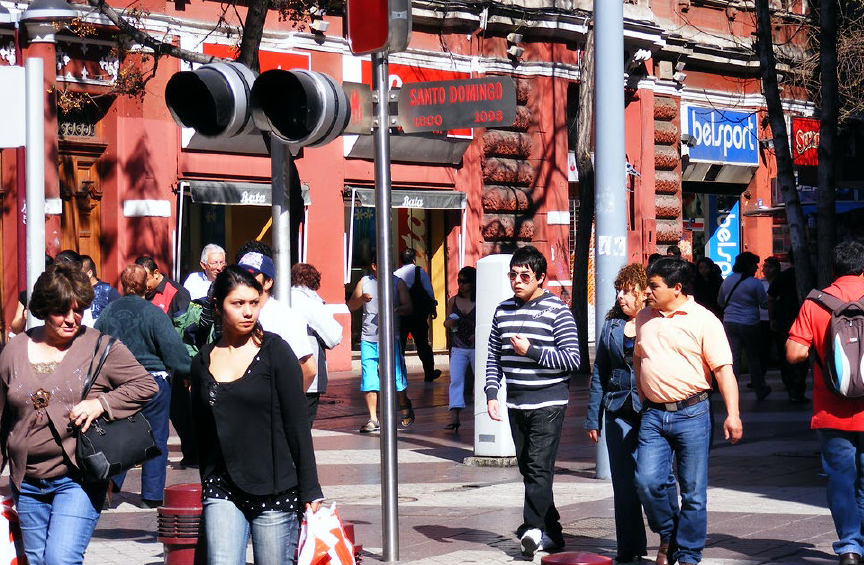Seguridad y espacios públicos: Boric tiene razón
DOI:
https://doi.org/10.11565/oe.v1i187.545Palabras clave:
Seguridad ciudadana, Recuperación de espacios públicos, Prevención del crimen, Participación ciudadana, Distribución espacial del delito, Teoría de las actividades rutinarias, Control social informal, Aglomeración urbana, Impacto de la actividad urbana, Vigilancia comunitariaResumen
La lucha contra el crimen es uno de los principales desafíos que enfrenta La Moneda y, como en otros ámbitos de la política pública, requiere de un enfoque integral. En este contexto, las declaraciones recientes del Presidente Gabriel Boric sobre la importancia de recuperar los espacios públicos como parte fundamental de la estrategia para combatir el crimen merecen una reflexión detenida. (seguir leyendo...)
Descargas
Citas
Becker, G. (1968). Crime and punishment: An economic approach. Journal of Political Economy, 76 (2), 169-217. DOI: https://doi.org/10.1086/259394
Browning, C. R., & Jackson, A. L. (2013). The social ecology of public space: Active streets and violent crime in urban neighborhoods. Criminology, 51, 1009-1043. DOI: https://doi.org/10.1111/1745-9125.12026
Carr, J. B., & Doleac, J. L. (2018). Keep the kids inside? Juvenile curfews and urban gun violence. The Review of Economics and Statistics, 100(4), 609-618. DOI: https://doi.org/10.1162/rest_a_00720
Chang, T. Y., & Jacobson, M. (2017). Going to pot? The impact of dispensary closures on crime. Journal of Urban Economics, 100, 120-136. DOI: https://doi.org/10.1016/j.jue.2017.04.001
Cohen, L. E., & Felson, M. (2010). Social change and crime rate trends: A routine activity approach (1979). In Classics in environmental criminology (pp. 203-232). Routledge. DOI: https://doi.org/10.4324/9781439817803-12
Glaeser, E. L., & Sacerdote, B. (1999). Why is there more crime in cities? Journal of Political Economy, 107(S6), S225-S258. DOI: https://doi.org/10.1086/250109
Harries, K. (2006). Property crimes and violence in United States: An analysis of the influence of population density. International Journal of Criminal Justice Sciences, 1(2), 24-34.
Jacobs, J. (1961). The Death and Life of Great American Cities. New York: Vintage Books.
Jarrell, S., & Howsen, R. M. (1990). Transient crowding and crime: The more “strangers” in an area, the more crime except for murder, assault and rape. American Journal of Economics and Sociology, 49(4), 483-494. DOI: https://doi.org/10.1111/j.1536-7150.1990.tb02476.x
McMillen, D., Sarmiento-Barbieri, I., & Singh, R. (2019). Do more eyes on the street reduce crime? Evidence from Chicago’s safe passage program. Journal of Urban Economics, 110, 1-25. DOI: https://doi.org/10.1016/j.jue.2019.01.001
Milgram, S. (1972). The familiar stranger: An aspect of urban anonymity. Division 8 Newsletter. A Division of Personality and Social Psychology. American Psychological Association.
Rosenthal, S. S., & Urrego, J. A. (2023). Eyes on the street, spatial concentration of retail activity and crime. Mimeo.
Tillyer, M. S., & Walter, R. J. (2019). Busy businesses and busy contexts: The distribution and sources of crime at commercial properties. Journal of Research in Crime and Delinquency, 56(6), 816-850. DOI: https://doi.org/10.1177/0022427819848083
Weisburd, D. (2015). The law of crime concentration and the criminology of place. Criminology, 53, 133-157. DOI: https://doi.org/10.1111/1745-9125.12070
Wilcox, P., & Eck, J. E. (2011). Criminology of the unpopular: Implications for policy aimed at payday lending facilities. Criminology & Public Policy, 10, 473-482. DOI: https://doi.org/10.1111/j.1745-9133.2011.00721.x
Zahnow, R. (2023). Examining train stations as crime generators and the protective effect of “regular” riders. Crime & Delinquency. 00111287231160737. DOI: https://doi.org/10.1177/00111287231160737
Zahnow, R., & Corcoran, J. (2021). Crime and bus stops: An examination using transit smart card and crime data. Environment and Planning B: Urban Analytics and City Science, 48(4), 706-723. DOI: https://doi.org/10.1177/2399808319890614
Zahnow, R., Chen, C. S., & Corcoran, J. (2023). Familiar strangers and crime at transit stations: Is crime lower at train stations where familiar strangers are present? Applied Spatial Analysis and Policy, 16(2), 851-871. DOI: https://doi.org/10.1007/s12061-023-09507-0

Descargas
Publicado
Cómo citar
Número
Sección
Licencia
Derechos de autor 2024 Observatorio Económico

Esta obra está bajo una licencia internacional Creative Commons Atribución-CompartirIgual 4.0.






